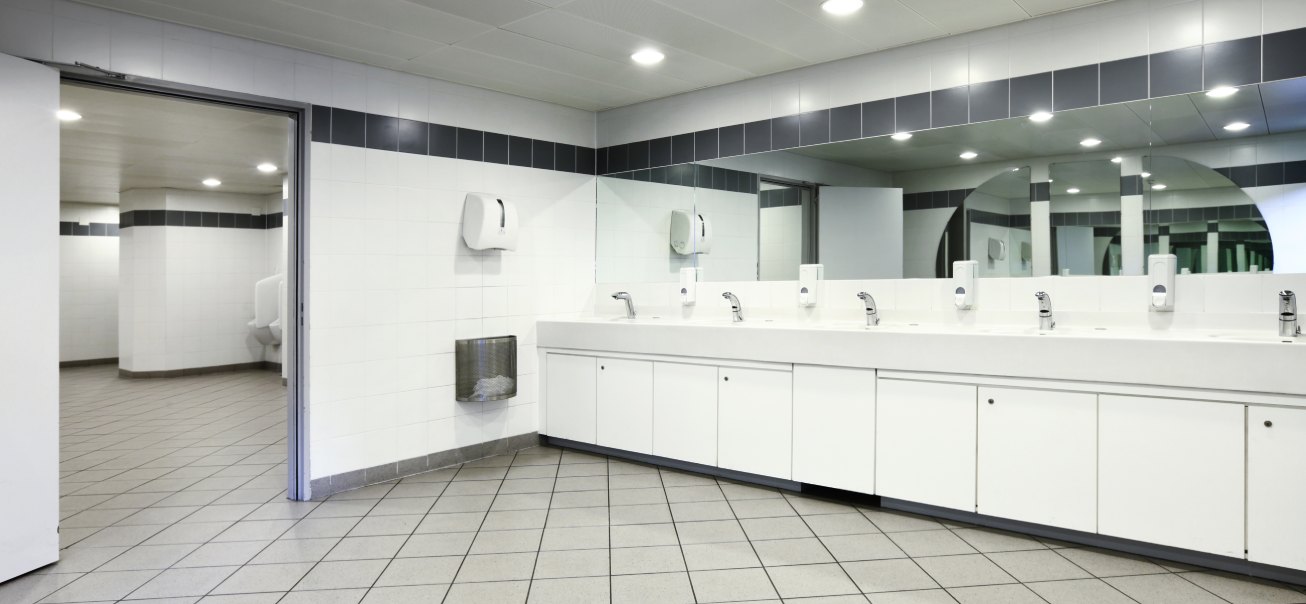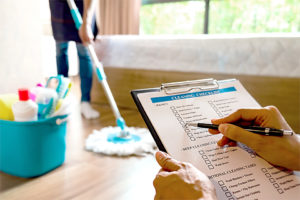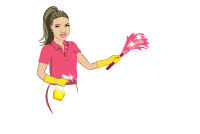
Combatting Cross-Contamination Concerns In Public Restrooms
In any commercial setting—whether it is a hotel, office, school, airplane or even a hospital—public restrooms represent one of the biggest infection prevention challenges and are areas with the greatest potential for germ cross-contamination. Due to their function and constant use, everything from urine and fecal matter to other bodily fluids and dirt contribute to restroom cleaning challenges daily. Not to mention, every time a toilet is flushed, it releases a plume of aerosolized droplets that can carry bacteria to other restroom surfaces like floors, walls, and handles,1 heightening cross-contamination concerns.
Cross-contamination occurs when bacteria and viruses are transferred from one surface to another. The abundance of high-touch surfaces and objects in public restrooms make it easy for patrons and even cleaning professionals to inadvertently move illness-causing pathogens from one surface to another. For example, when a woman’s purse is placed on a restroom floor and then placed on a sink counter, the germs and bacteria on the floor can be transferred to the purse and then to the sink. One study even found that 20 percent of handbags contained more germs than the average toilet flush and could potentially cross-contaminate other surfaces.
PUBLIC RESTROOM CLEANING CHECKLIST—KNOW WHERE TO START
Following consistent restroom cleaning procedures takes all of the guesswork out of this important task. It makes cleaning staff more efficient, sets clear expectations, saves time and prevents possible cross contamination. A cleaning checklist not only makes the job clear, it also highlights seemingly benign areas that are actual pathogen hotspots. The toilet, for instance, is an obvious priority but restroom sinks can harbor just as much salmonella, listeria and E. coli.
Need help keeping your home clean and neat? Our maid service team can help! Contact us today!
COMMERCIAL RESTROOM CLEANING PROCEDURES: HOW TO DO IT RIGHT
With the right mindset, tools and checklists in hand, it’s time to start cleaning. Start with a top to bottom dusting. Then it’s time to inject cleaning chemicals on fixtures and all soiled surfaces. Start with the fixture closest to the door and travel in a circular pattern. The cleaning solution should be sprayed on toilets for seven seconds, urinals for three seconds and sinks for two. Flush chemicals from the spray line onto the floor, manually brush heavily-soiled areas if needed.
Pressure wash fixtures from top to bottom with clear water. Urinals should take about 15 seconds. Pinpoint rinse toilet plumbing and seat top then lift seat and rinse hinges and seat bottom. Place the nozzle under the rim and rotate around the rim for four seconds then spray directly into the bowl for another four. Finally spray the bottom and base of the toilet. The high-pressure rinse should take about 30 seconds per toilet.
Squeegee mirrors. While there are other ways to clean and shine mirrors, they are less effective and require quite a bit of elbow grease. A well-made squeegee will keep mirrors bright and shiny and can be used on flat surfaces, like countertops and partition walls, as well.
Wet vac restroom floors from front to rear to fully remove dangerous soils and odor-causing bacteria. A wet vac also leaves floors dry and ready to use. You can also blow dry flush handles and toilet seat tops for immediate use.




